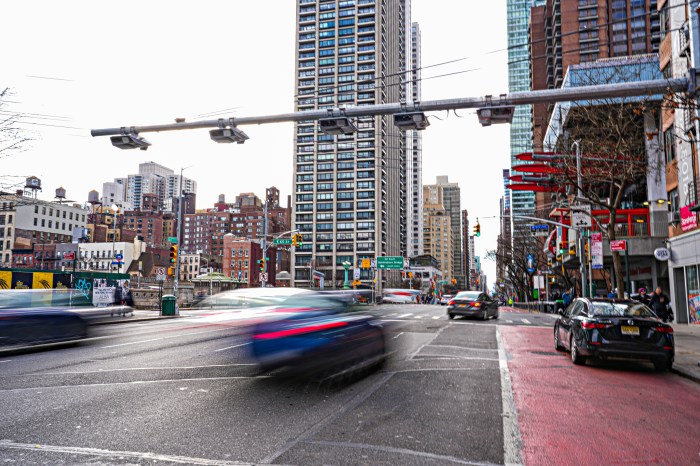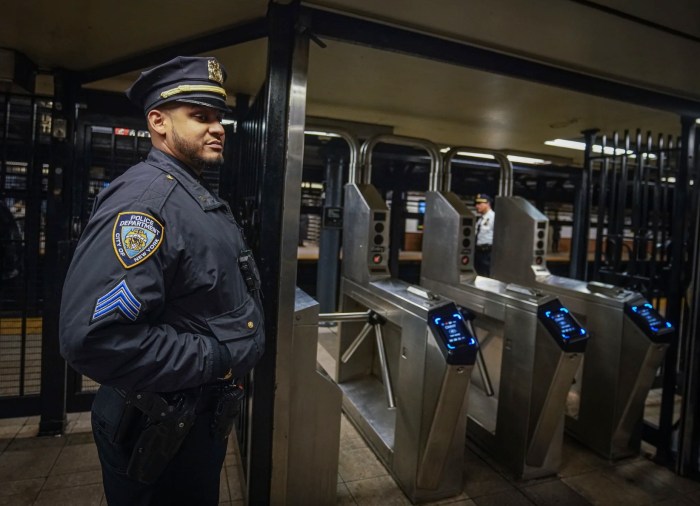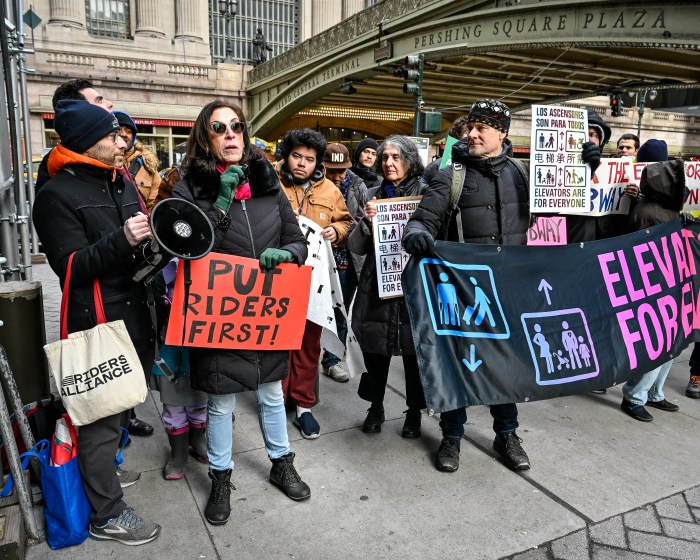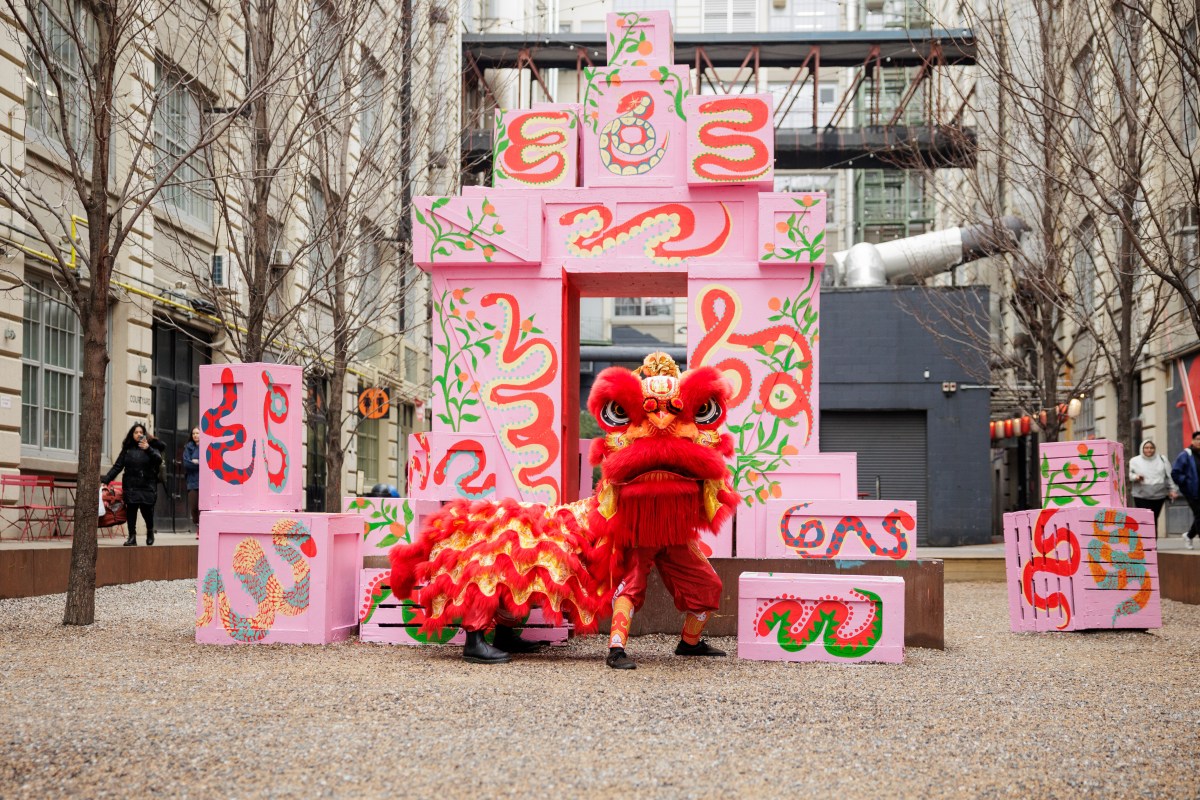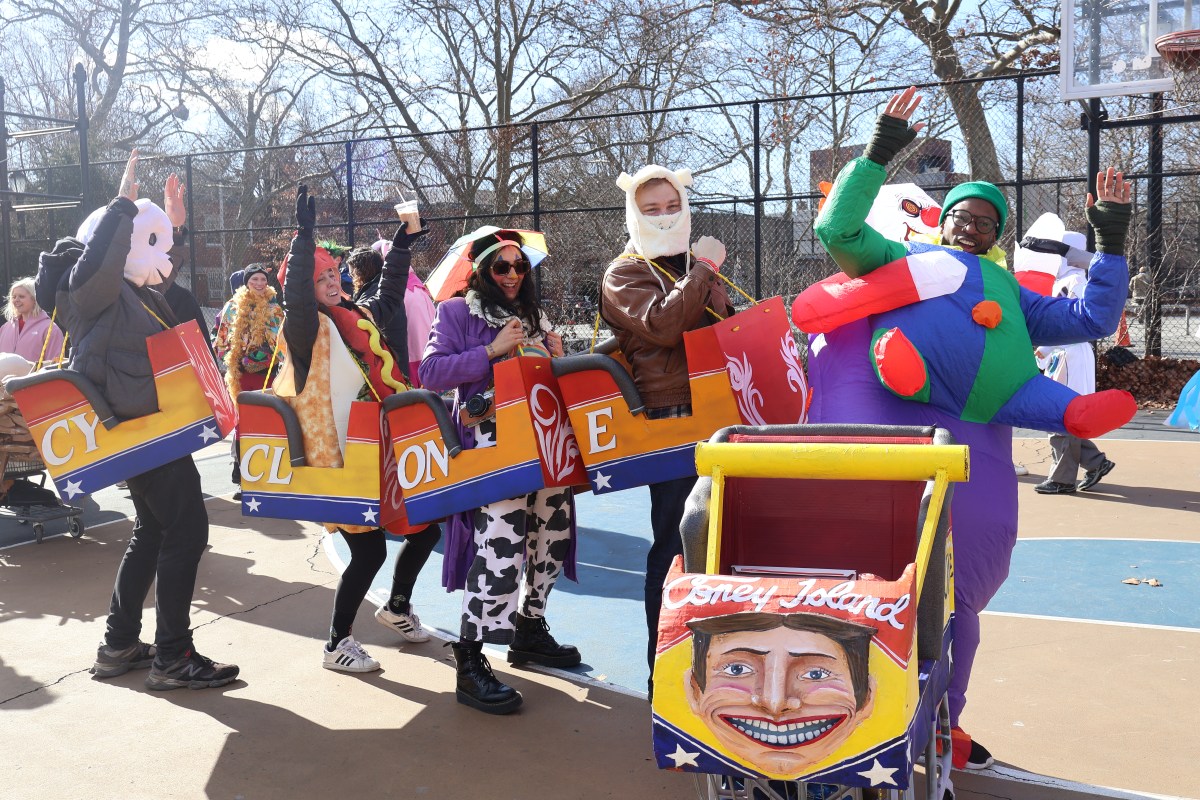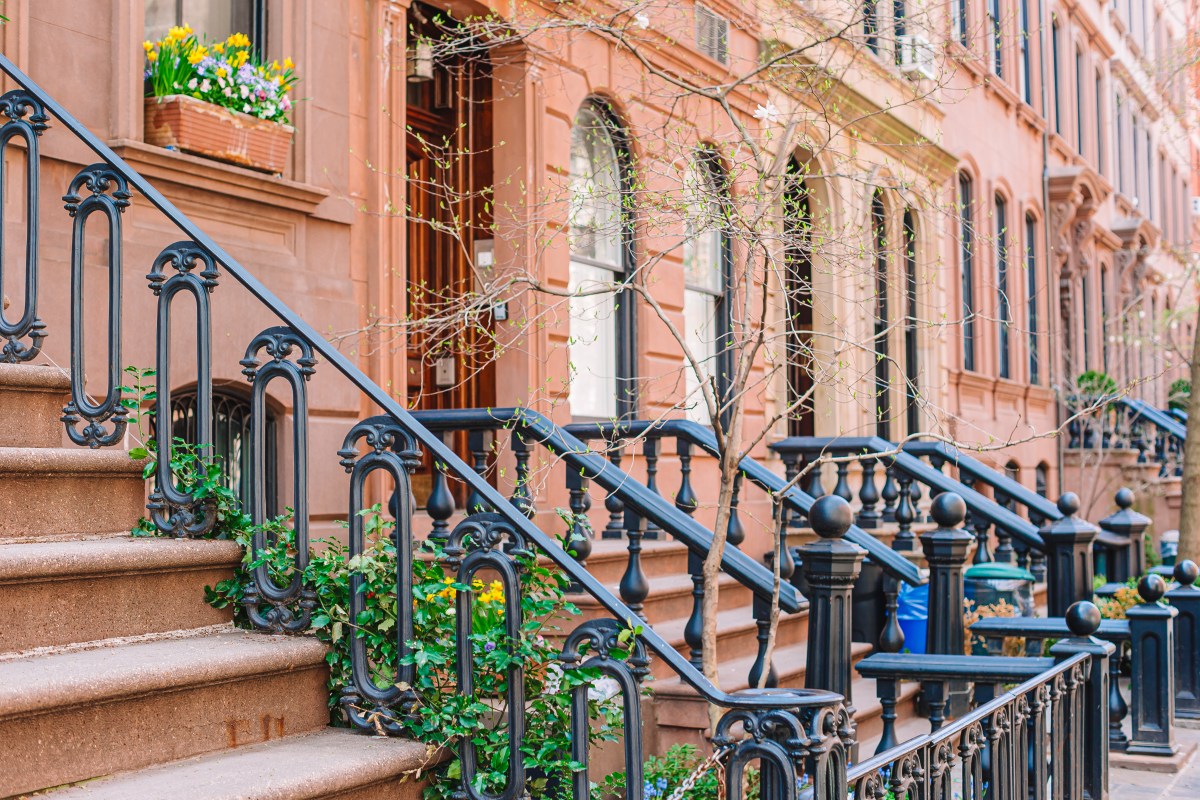
Its columns have large chunks of tile missing. Others are covered in grime and soot.
The Chambers Street station of the J line, underneath the civic heart of the city, is notoriously filthy. Opened in 1915, the station looks like a scene from a dystopian New York. On some dirty tiled columns recently, a “free wifi” sticker was attached. On others, somebody appears to have wrapped an adhesive image of clean tiles around the dirtiest ones.
“It’s definitely falling apart. Under City Hall you expect a little more of this station,” said Kerry Espino, 42, of Bushwick. He takes the J train to Chambers Street every day for work.
Shon Roberts, who passed through recently, said the station was a fitting “horror movie backdrop.”

“It’s incredibly creepy. It’s so run-down,” said Roberts, 26, of Jamiaca.
Like water trickling through a ceiling during the rain, stations like Chambers Street appear to have slipped through the cracks at the MTA, which is wrapping up its controversial station renovation program, known as the Enhanced Station Initiative, without Chambers Street on its list.
There is good news, though. The MTA announced in May that Chambers Street will be renovated, complete with the addition of two elevators.
So amNewYork wants to hear from riders: Which other stations need the authority’s attention? What’s the worst-looking station in the city?
NYC Transit conducts a station condition survey every five years to evaluate the 472 stations across the city. They check on stairs, platform edges, columns, flooring and tiling. Engineering staff then use the survey to prioritize their inspections and ultimately develop projects in the MTA’s five-year capital programs.
Shams Tarek, an MTA spokesman, touted that process as well as the more recent initiative to improve station environments. In September, the authority unveiled new managers for clusters of stations to improve accountability and response time when issues arise.
“There’s a comprehensive system in place for identifying problems in stations and getting them addressed, and innovative new approaches like the Group Station Manager program promise to accelerate the process and get more targeted improvements done more quickly,” Tarek said in a statement.
The nearly $1 billion Enhanced Station Initiative was fraught in that cost overruns kept the MTA from renovating as many stations as it had planned. But the program, first unveiled by Gov. Andrew Cuomo, also drew outrage from advocates for what they felt was an embodiment of misplaced priorities at the Transit Authority. At a time when subway and bus service tanked — and when three quarters of stations aren’t accessible — opponents felt undue resources were being spent on cosmetic improvements. The MTA countered that much of the work was structural.
The program sparked a debate as to where station improvements should rank among MTA priorities. Some, like The New York Times writer Jim Dwyer, have argued that riders deserved nice-looking stations. Others countered that if trains run every three minutes, the cosmetics of a station don’t matter as much because riders won’t be stewing there.
“It’s a tricky question. I think the most important challenge for the MTA is fixing its signals and improving service — but station improvements are still important. We don’t want to see another incident like we saw over the summer at Borough Hall, where the ceiling actually collapsed,” said Jaqi Cohen, of the NYPIRG Straphangers Campaign, one of the critics of the Enhanced Station Initiative.
Ultimately, though, Cohen said the “MTA should be able to walk and chew gum at the same time,” tackling service improvements, station accessibility and cosmetic fixes at once.
Alan Minor, a community activist in Brooklyn, believes there’s much more untapped potential in subway stations. He has focused his advocacy on pushing to reopen closed entrances and stairwells at stations in his borough, where there have been large influxes of new residents.
“Stations are an amenity and, in an ideal world, they should be thought of as community facilities” with more space for commercial or community-related activities, said Minor, whose master’s thesis at Pratt University explored spatial justice and equitable access to local resources.
“In one sense, they are midpoints to people’s destinations,” he saaid. ” but in another sense, as we see in other parts of the city, they can be destinations in and of themselves.”
With Andy Mai
Think your station is the worst? We want to hear about it! Email Vincent Barone at vin.barone@amny.com or hit us up on social with #minestheworst, and we might just feature your terrible, horrible, no good, very bad station in a future article.



